“For our wombs which are sick!”
This piercing phrase was blurted out in a high-pitched voice by a small but sturdy woman: Maria Leusa Munduruku, who is one of the most important leaders of her indigenous people. She had just learned that her womb and her milk, once sources of health and vitality, had become sources of contamination and sickness for her children. The same had happened to the fish of the Tapajós, the river that runs alongside her village, and to many other native peoples who dwell on river banks in the Amazon region. Due to an explosion of illegal mining, mercury flows through the veins of the women and the river.
It was the end of September and Sawré Myubu villagers, in the state of Pará, were holding what they called a Mercury Meeting. At first glance, it may be hard to imagine why an indigenous community in the middle of the rainforest would hold a meeting with this name, but the reasons are revealed bit by bit, like the river, which used to be an intense blue, changes color little by little. Maria Leusa continues firing arrows of pain: “For our bodies! For our children!”
She and other Munduruku leaders call each other “Old Woman”. This is a strategy to avoid identification in text messages and cell phone calls – a necessary precaution because communications are tapped and many of them have been threatened with death. Maria Leusa had her house burned down in May 2021 by a group of miners who are working illegally on indigenous lands. They also set fire to her parents’ house. Months earlier, in April 2021, the Munduruku Wakoborũ Women’s Association, named after a mythical woman who led a war against the village that killed one of her brothers, saw its headquarters in the municipality of Jacareacanga, in the State of Pará put to the torch.
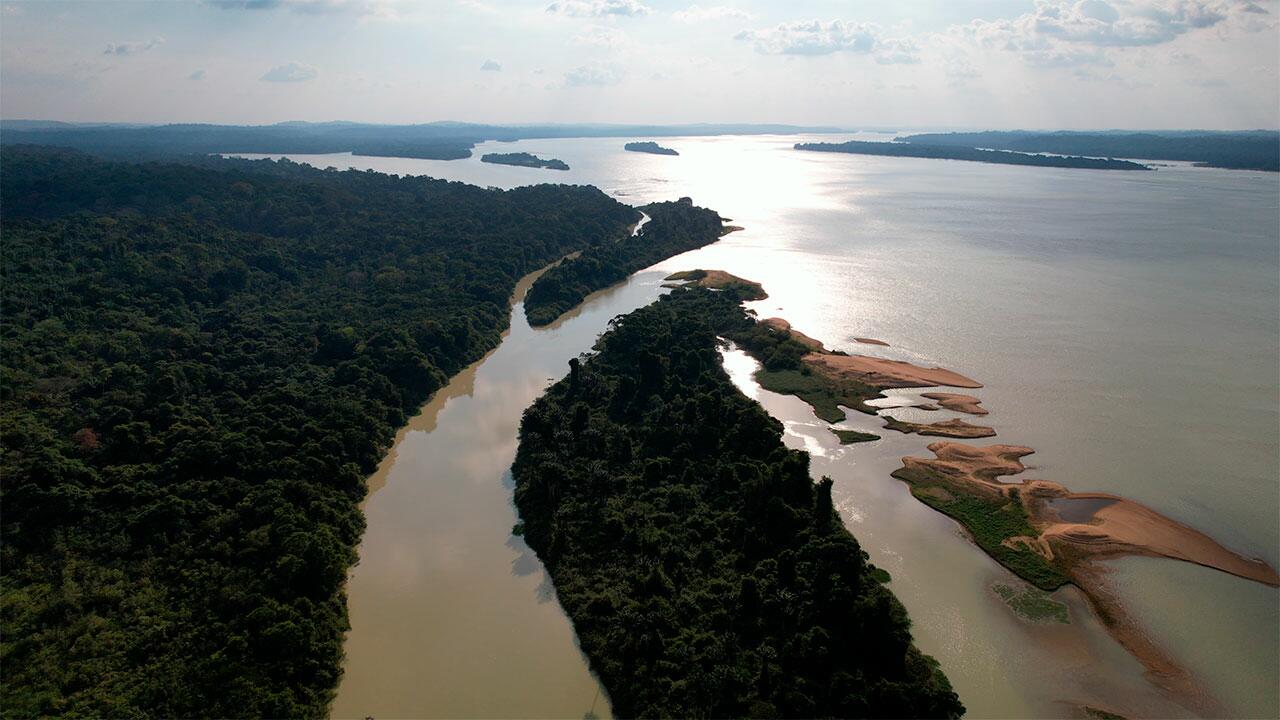
The Tapajós River used to be an intense blue, but it is now changing color due to mercury contamination. Photo: Juliano Salgado
It is “Old Women” who are on the front lines of a war that contaminates the mighty Tapajós River with mercury, as well as the veins of humans and non-humans. In the second to last week of September, a team of researchers from the Oswaldo Cruz Foundation (Fiocruz), led by the researcher Paulo Basta, delivered the results of an investigation into mercury contamination among the Munduruku population. The research was carried out in 2019 in response to a request from the native people themselves. It examined hair samples from 197 people of different ages who live in the Sawré Muybu, Sawré Aboy and Poxo Muybu communities.
The participants lived in 35 houses spread over the three villages and 91.4% of them consumed water from rivers and streams. The findings were terrifying: 57.9% had a prevalence of mercury exposure of more than six micrograms per gram, which exceeds the safety limit established by the US Environmental Protection Agency. One of the main forms of contamination was monomethyl mercury (MeHg), which is by far the most toxic of the mercury compounds due to its ability to pass through biological membranes and reach the central nervous system. Even prolonged exposure to low concentrations of monomethyl mercury can cause alteration of genetic material, along with other serious consequences.
The closer participants lived to the gold-mining areas, the higher were the levels of mercury in their bodies. In the Sawré Aboy community, on the Jamanxim River, which is one of the waterways that is most affected by illegal mining, the average concentration of mercury in 12-year-old children was 11 micrograms per gram, an elevated level that was classified as “very high risk of sickness.”
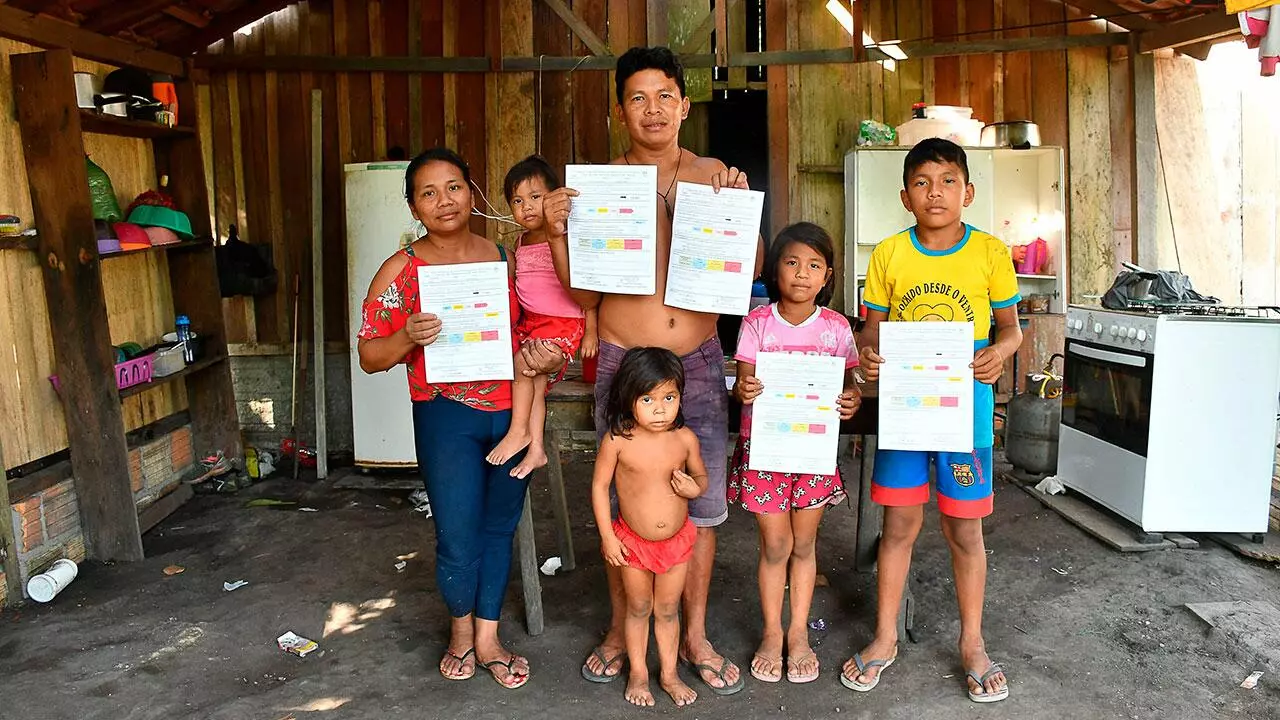
In the Sawre Muybu village, Daniel Saw Munduruku and his family share research by the Fiocruz institute. Photo: João Paulo Guimarães/Sumaúma
Before the individual results were delivered, the researcher made a presentation regarding the situation of the three communities. Hundreds of people were gathered under the thatched roof of the circular maloca (communal house) to listen. Many already felt the contamination in their bodies, but they knew they needed scientific confirmation in the “white man’s” language, in order to have any chance of being heard. The heat made their skin sticky with sweat. The crash of thunder announced a rainstorm. Women breastfed their babies. Small children were running around and playing in the space. The smell of fish, prepared in the kitchen, pervaded the atmosphere with a whiff of insanity: our dinner was the main vector of mercury contamination.
The rain poured down as Paulo Basta described the flying rivers, the massive watercourses formed by the sweat of the Amazon rainforest, rivers that fly over our heads carrying rain to Brazil’s south-central region. It was a stunning image, and it always moves those who hear it. But this time it felt different. The researcher said the rain also contains mercury which evaporates into the air from gold-mining sites and could, at that very moment, be contaminating the soil, crops and food. The wind brought by the rain shook a banner that had been painted and hung by the indigenous residents bearing the words “the future is now”.
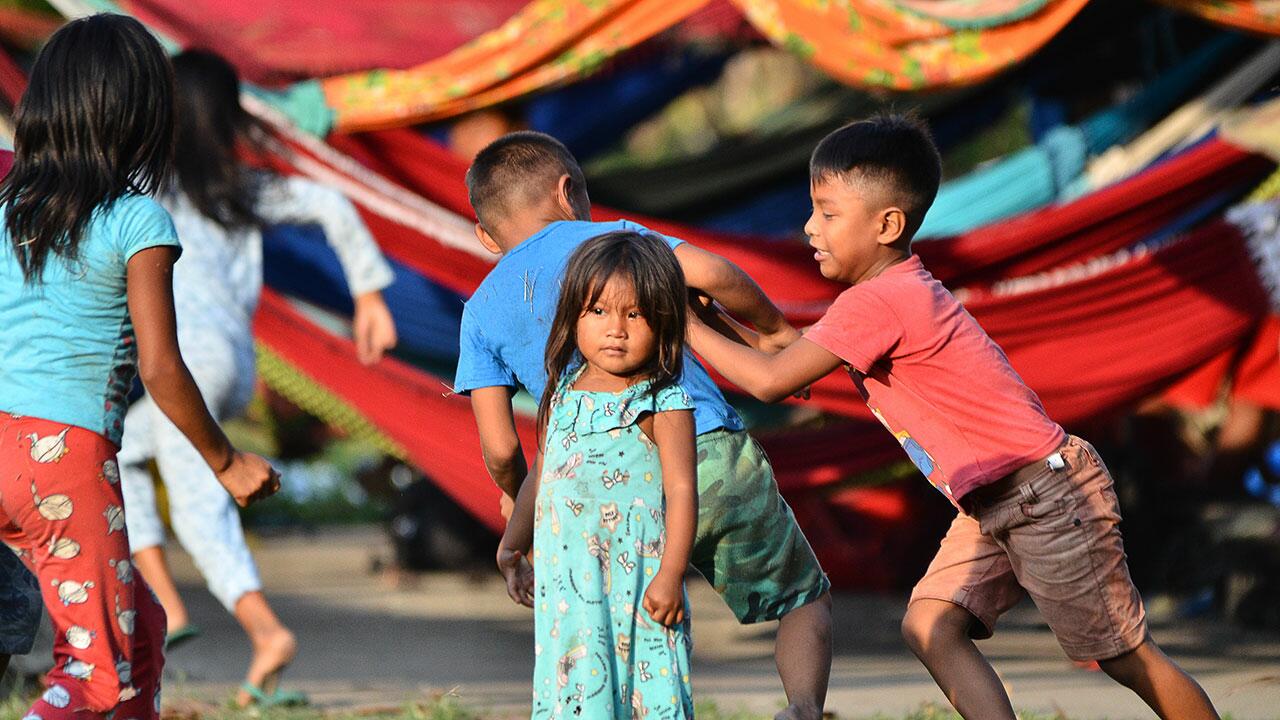
Munduruku children play in a village in the Tapajós basin, where the water and fish are contaminated by toxic mining chemicals. Photo: João Paulo Guimarães/Sumaúma
It is the future of the Munduruku people that is most directly threatened. The most serious effects of mercury contamination are on those in their mothers’ wombs, and those who have just been born and are being breastfed. Contamination can cause irreparable damage to the central nervous system of fetuses and newborn babies.
Another piece of research conducted by Basta’s group, this one led by the researcher Rogério de Oliveira, from the University of São Paulo, confirmed somatosensory, motor and cognitive alterations suffered by the same sample of the Munduruku population. This study of 111 people found two with levels of monomethyl mercury of 11.68 and 15.68 micrograms per gram that had impaired motor coordination. Others, with exposure to monomethyl mercury in excess of 10 micrograms per gram, were roughly twice as likely to have cognitive deficits and make errors in tests of verbal fluency. The deterioration of motor and cognitive functions is suggestive of neurotoxicity due to chronic exposure.
The scientists involved in the study proposed: 1) illegal mining activities should immediately be stopped and that the invasion of traditional and protected lands in the Amazon be terminated; 2) the development of a national plan to phase out the use of mercury in small-scale mining, and 3) a risk management plan should be developed for populations that are chronically exposed to mercury. But who is listening to them in the Bolsonaro administration, in which the president himself deliberately encourages gold mining in protected areas and has introduced a bill to allow mining on indigenous land?
What must the mothers have felt to be told their breast milk is contaminated with mercury even as they breastfed their babies? How difficult must it have been for them to discover fish, which is the staple food in the Amazon region, is the source of contamination of the fetuses growing in their wombs?
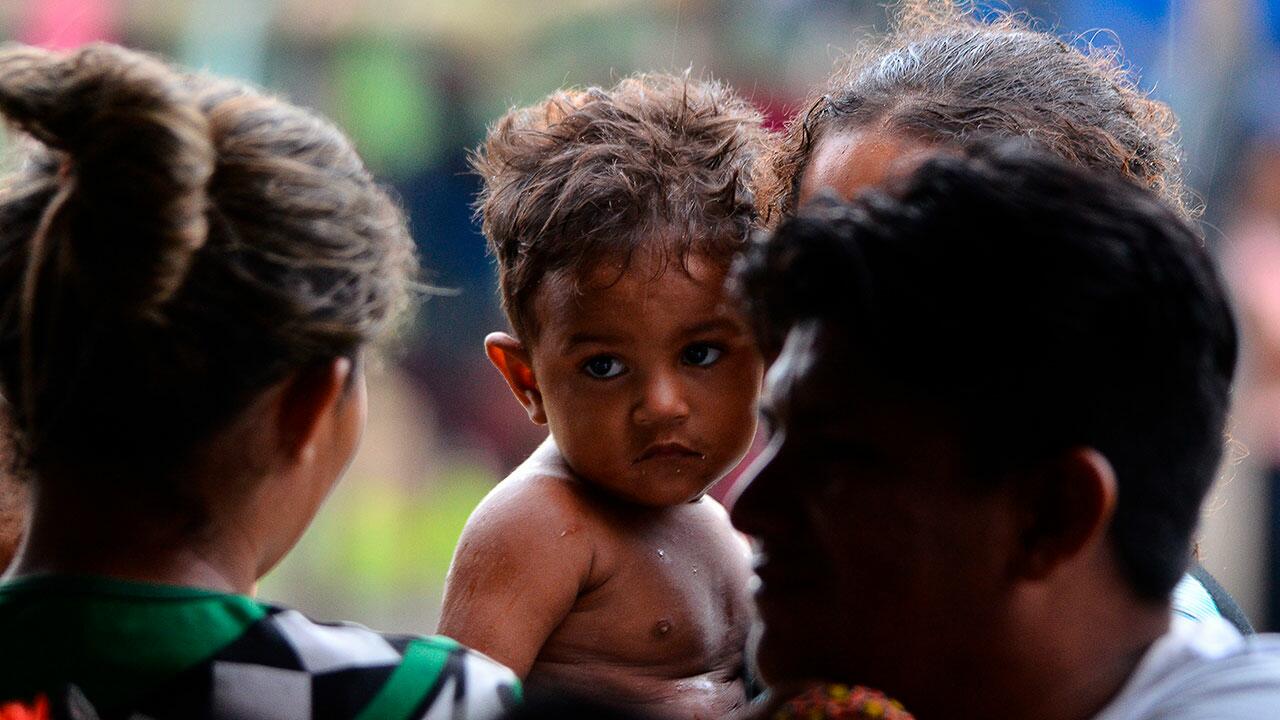
Indigenous people who live in the Daje Kapap, Karo Muybu and Boa Fé villages. Photo: João Paulo Guimarães/Sumaúma
An intense sadness hung over the maloca, which was heavier than even the storm clouds. In silence, tears streamed down the faces of the Munduruku women and men. One of the leaders named Hans Kaba pierced the atmosphere with his voice. He took the microphone and tried to put his feelings into words: “I don’t have a question, because I understand. If I didn’t understand, I would have a question. It’s just very sad because I understand that this is a disease for which there is no cure. It’s very sad”.
Triste (sad) was the word in Portuguese that was most heard during the meeting. Sometimes the speeches were made in Portuguese and sometimes in Munduruku, and there were always translations into both languages so that everyone was able to have access to the debate. When people made their speeches in the Munduruku language, a few words were said in Portuguese. They were those words that do not exist in the Munduruku world, but which have come to invade their lives. Words also contaminate. Enemy words. Untranslatable words.
The forest is a language. The river is a language. And in the Tapajós language, the Munduruku refuse to accept words in their language that get in the way of their lives and make a point of shouting them out loud in the language that threatens them.
I wrote down all the words and expressions that appeared in the Portuguese language: illness, impact, gold-mining, examination, discussion, State, research, hunger, death project, illegal, malaria, absence, translation, mercury, expose, wait, destruction, traitor, sad and solution.
Solution was the second most repeated word. Sad, the first. Sad gave a name to the feeling that passed through the bodies of those who came together after the contamination findings had been read out. Solution seemed to be the name for the immediate demand to live. It was this demand, that of living, that motivated each one of the Old Women who got up to take the microphone and again and again ask the same question: “What is the solution?”. The voices of the Old Women were amplified by an immense speaker and turned into unerringly aimed, high-pitched arrows at very high volume.
That’s when the Old Woman Maria Leusa shot her arrow and hit us in our hearts: “For our wombs which are sick! For our bodies! For our children! I ask the women, do you want to see your children sick?”
As one, the Munduruku mothers answered, “No!” I wonder what answer the mothers of the municipality of Santarém, the mothers of the municipality of Itaituba, the mothers of the municipality of Jacareacanga, or the mothers of the administrative district of Alter do Chão would give to the Old Woman’s question: “Do you want to see your children sick?”. The question needs to be answered now, and collectively, so their children have a future. The only possible action is the immediate suspension of gold-mining activities not just in indigenous territories, but in the entire Tapajós Basin. It is not just the children being carried in Munduruku wombs who are being contaminated, but all of those who live on the banks of the river, human and non-human.
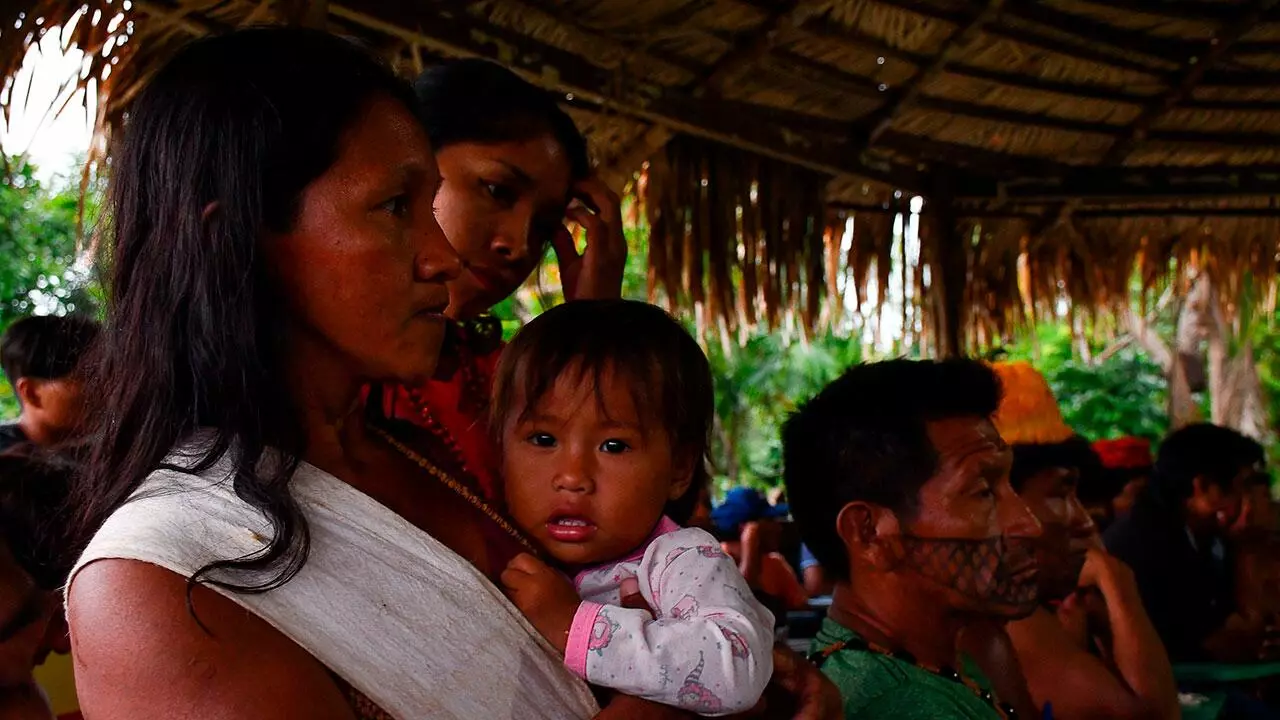
It is not just the Munduruku who are threatened by mercury contamination from the illegal mines; everyone who lives on the banks of the river is at risk. Photo: João Paulo Guimarães/Sumaúma
As Hans Kaba realized, the symptoms caused by mercury contamination have no cure. There is no remedy for it. Everyone’s mood became darker when they were told the mercury deposited in the waters of the Tapajós will remain in the river until it is diluted in other places and absorbed by the fauna, flora and human bodies over the years.
While the Old Women were screaming, the children occupied the spaces of the meeting shouting and playing, oblivious to the words that described the threat to their future. A pariwat, as a “white” non-indigenous person is called, seemed irritated by the noise created by them. He was the only one who seemed bothered and he even went as far as trying to control a small group of girls and boys, who paid him no attention. Without any success, the man sought the assistance of a Munduruku, demanding that he do something about it. One of the Old Women, attentive to everything that was being said around her, replied: “Leave the children alone. He is the one who is annoying”.
However, the man, who was a federal government employee, did not understand his place at that meeting. He interrupted the speech of one of the Old Women when she was criticizing the performance of the institution in which he works and which, during the Bolsonaro administration, began to operate in a way that was at odds with its function. “You did not understand my statement,” yelled the pariwat. With a leap, the Old Woman dropped the microphone and advanced towards the enormous man, slapping and kicking as she shouted that he was the one who did not understand. “I’m leaving. I’ll go,” he spluttered, seeming to have shrunk. No more was heard from him.
It is one thing to know what the concept of courage means, but it is quite another thing to see it in action. And courage materialized there in front of all of them in the small body of an enraged woman. In case anyone else still had doubts about their place, another Old Woman explained: “A pariwat has no right to speak, he has to keep quiet. He just has to listen. We are here to defend our river, our land and our children.”
And then a very old woman took the floor to make a long speech in Munduruku. I was unable to understand what she said, and she did not utter a single word in Portuguese. I didn’t understand it, but I felt it. I felt it not just in the tone of each word, but from the silence that seemed to take hold of the maloca. Suddenly, everyone around her began to move towards her. The old people, the young people and children, everyone went quiet. The young Munduruku got out their cell phones and started recording that speech which was inaccessible to pariwats. The next day, one of the Old Women explained that she had said the river is sick, but that they were going to heal the river. I asked how you heal a river. The Old Woman told me that the women would work together with the mother of the river. “Everything has a mother,” she said.
The days of the meeting knitted together an alliance between the mothers of the forest, humans and non-humans. It was as mothers that the Old Women stood up to assert their role in taking care of their territories, their bodies and of their daughters and sons. An alliance was formed between the Munduruku mothers and the mother of the river; the mother of Pirarucu and Wakoburu; between hair and blood; between a river the color of milk and contaminated breast milk; between wombs and rivers, amniotic fluid and diseased waters; between fish and children; between body and territory. Between the children of the Old Women and the veins of the river.
On the last day, we watched the movie ‘Amazônia, a Nova Minamata?’ (the Amazon region, the New Minamata?) by Jorge Bodansky. The film shows the mercury contamination from a factory owned by Chisso Corporation that plagued the village of Minamata in Japan from the 1930s to the late 1960s. It establishes a relationship between the history of this village and what is currently happening in the Amazon. A past in Japan that can throw light on a predicted future in the Amazon unfolded before our eyes. We were shown images of bodies twisted by serious motor and neurological effects caused by the contamination in Minamata. Watching those horrific scenes with the Munduruku beside me, I wondered how they must feel, knowing they are only at the start of an ever-worsening contamination.
*Additional research by Luiza Mugnol-Ugarte
Translated by Mark Murray




